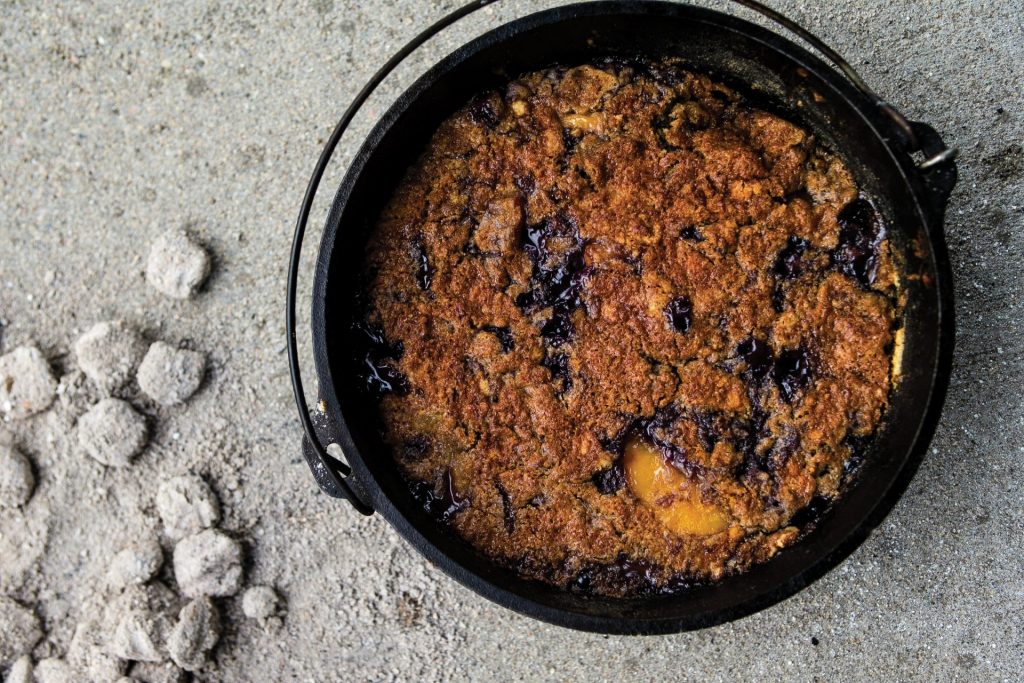Enlarge

By Julie Geiser
In the summer, cooking with a Dutch oven outside prevents me from having to heat up the house, and while camping, it allows me to cook a homemade meal. Here are my tips on using and maintaining cast iron cookware for outdoor use.
Dutch ovens come in many sizes. I recommend an 8-inch oven to feed two or three people, a 10-inch oven for four and a 12-inch oven for six. For outdoor cooking, buy an oven with three 1-inch legs, or longer, to keep it off the coals. The best iron casting should be uniform in thickness across the oven. If an oven has many pits and excess metal at the mold seams, don’t buy it. Names such as Lodge, Cabela’s, Camp Chef, Coleman and Texsport are good ovens.
Look for a rimmed lid to keep coals and ash from falling into your food when you move it. Lids should also have a handle with an open space to lift the lid; don’t get an oven with a solid handle or no handle. Make sure the lid is tight fitting. I prefer one that could be turned upside down to use as a make-shift skillet as well.
To contain my Dutch oven and charcoals while cooking, I use a galvanized hog pan to keep fire hazards at bay in campgrounds and in my backyard. Large-size, disposable aluminum foil roasting pans are also great for camping; when you are done cooking, cool the coals with water, fold everything up and throw it in the trash.
Whatever you can cook in your oven at home, you can make in a Dutch oven. The diameter of the oven determines how many coals to use. To moderate the temperature of a Dutch oven, use the rule of two: For a 12-inch oven you’ll need two coals per inch, or 24 coals total. Divide the coals between the top and bottom, placing two or more coals on the top. Space coals evenly in a circular pattern on the outside edges of the top and bottom of the oven, i.e., 10 coals underneath and 14 on the top with four coals in the middle of the lid for a steady 350 degrees. Each charcoal equals about 25 degrees, so adding or subtracting heat is easy.
Hand wash cast iron by scraping off excess food from the oven with a rubber scraper. Then fill the oven with water and heat to remove stuck-on food by scraping with a brush, scraper or stainless steel chain scrubber. If needed, use a small amount of soap to help remove food – some people will disagree with this method, but I’ve used soap for years. Wipe the Dutch oven dry and coat the entire oven with a thin layer of oil on a paper towel before returning to storage.
Useful accessories for Dutch oven cooking include a good pair of leather gloves to prevent burns, a lid lifter or hammer to remove the hot lid and a lid stand to keep the lid off the ground when checking your food. There are many other accessories to add to your collection as you advance. ■
The post Dutch Oven Cooking appeared first on Nebraskaland Magazine.
















